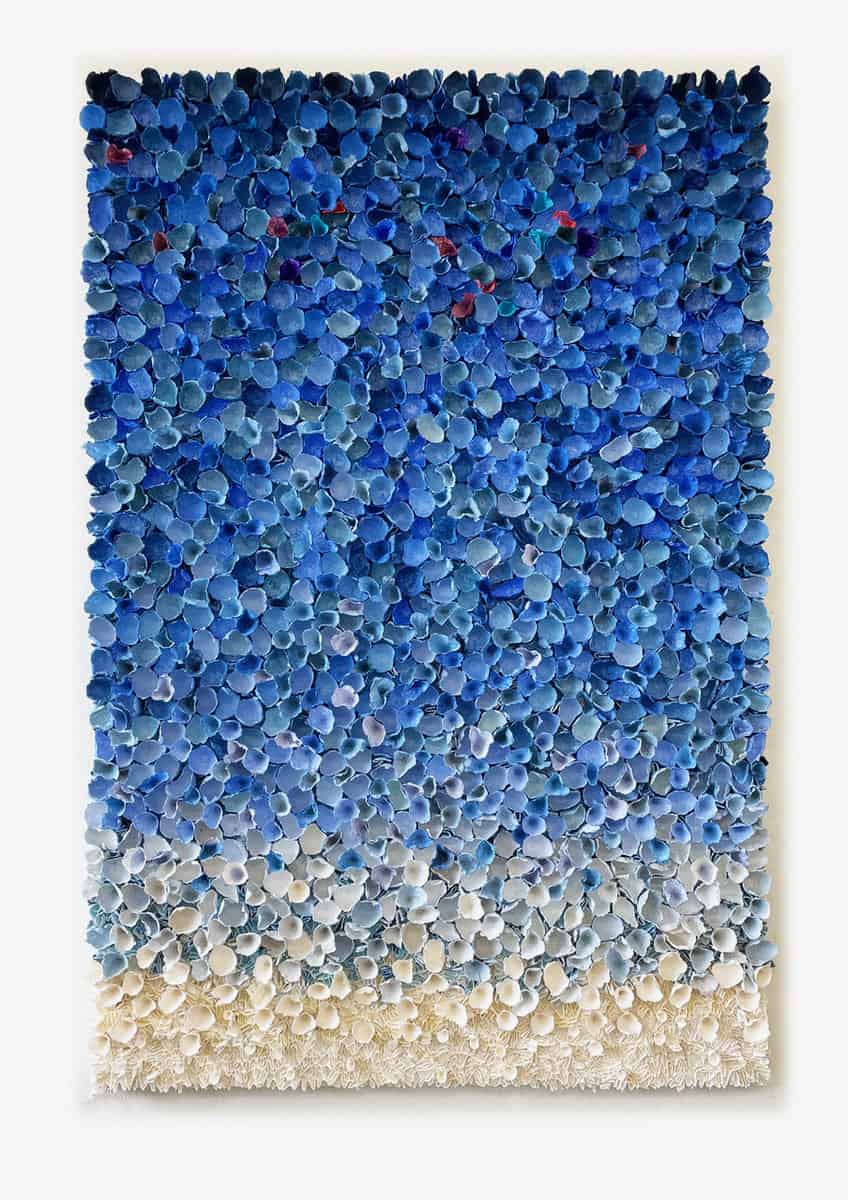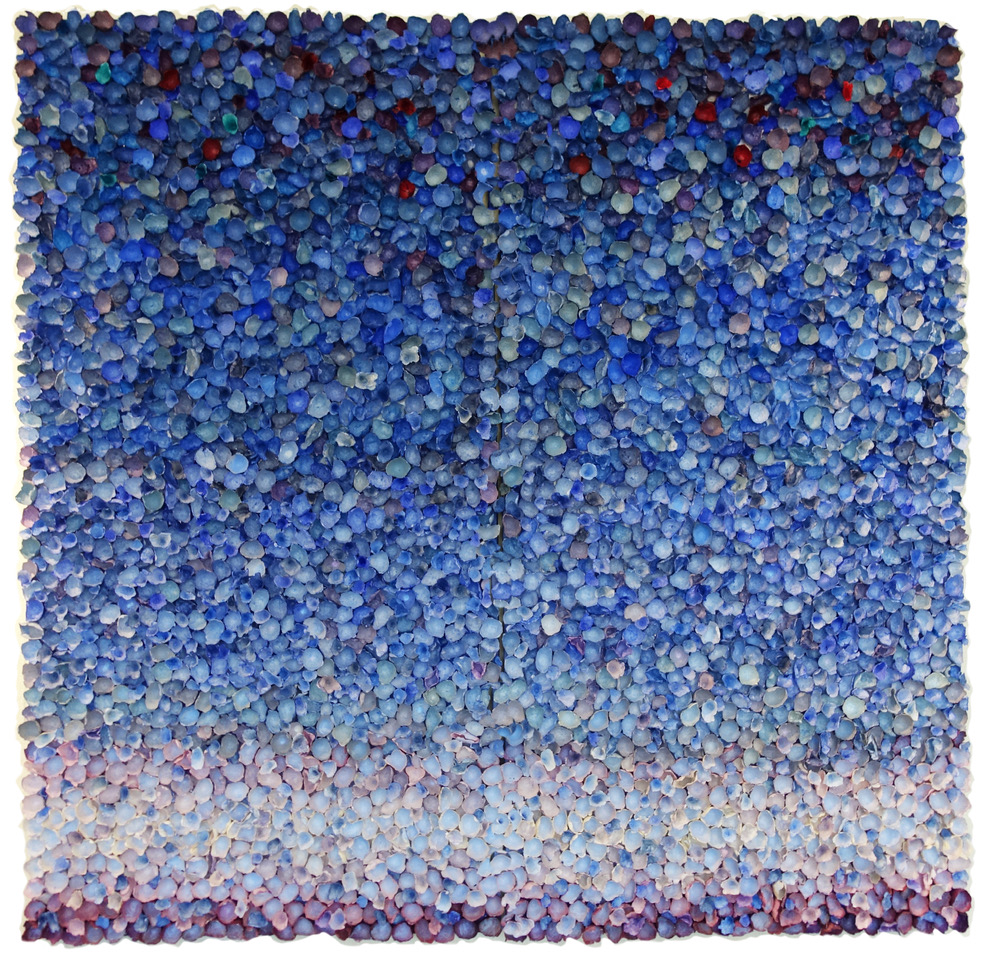PRISCILLA ROBINSON
Robinson makes paper for her creations from plant fibers processed in a Hollander beater. For some creations she beats the fibers for an extended time to make a crisp semi-translucent paper; for others she beats the fibers minimally so they retain a more puffy absorbency.
The artist couches the paper onto objects chosen for their shapes and textures or applies textures to the top surface of the paper.
A vacuum table compresses the paper and sucks away excess water. When the embossed paper is dry, she applies layers of thinned acrylic paint to the surface until the entire sheet is saturated with pigment. She shapes the paper into space-filling structures, sometimes by applying fiberglass to their backs, sometimes by gluing them to panels or grids.
For many of her glass works Robinson casts a mold from a sculpture or a found object and then fills the mold with granules of colored glass and organic paste. She fires the mold in a kiln for several days at temperatures up to 1550 degrees. This pate de verre method creates a subtle coloration and texture that echo the surfaces of her handmade paper.
Robinson also cuts shapes from sheets of colored glass, arranges the shapes into a mosaic, and then fuses the mosaic in a kiln at 1450 degrees. She smooths the edges of the cooled, now integral piece with a diamond bit grinder and then reheats it until it slumps over a curved mold. The mold carves the surface with patterns that echo the embossed patterns in the handmade paper.
If a work uses both paper and glass, Robinson combines the disparate materials by mounting the paper and glass units onto a larger support. The supports for the glass units allow light to pass through from the front and from behind.































